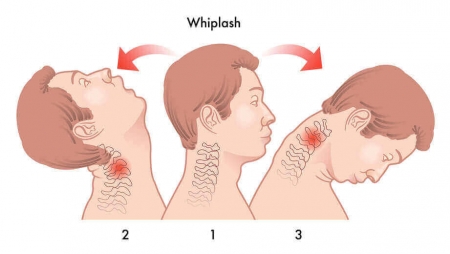What is Whiplash?
Whiplash is a common phenomenon that is created by damage to the muscles, ligaments and/or tendon structures in the neck.
Whiplash injuries occur when there is a rapid acceleration-deceleration of force that causes a ‘whipping’ of the head and neck. The average adult human head weighs 5kg. So, in reality we have a bowling ball on a stick. Whiplash Associated Disorders (WAD) is the umbrella term used to describe the injuries and symptoms that occur as a consequence of these forces.
Common Causes of whiplash
People mostly associate whiplash with when you have a car accident especially rear-end accidents. Whiplash can be caused by many other activities including:
- Sports such as rugby;
- Soccer when heading the ball;
- Rollercoasters;
- Bungee Jumping;
- Head collisions;
- Head Banging at a concert or dance floor;
- Even slapping someone unexpectedly on the back
Signs and Symptoms of Whiplash
Symptoms of whiplash and severity can vary significantly between people. The most common symptom is neck pain and stiffness. This can flare up from immediately after the incident up to 96 hours (4 days) later. One thing to note is that with any WAD, no matter how minor there is always going to be some sort of traumatic brain injury (TBI). Be this fatigue and difficultly concentrating to concussion, memory loss or even amnesia.
Symptoms include:
- History of trauma to the head/neck;
- Neck pain and stiffness;
- Jaw pain;
- Reduced mobility of the neck;
- Headache;
- Dizziness;
- Concussion;
- Aggravation of neck pain with movement;
- Fatigue or mood disturbance;
- Weakness in the arms;
- Neurological changes in the arms or neck such as tingling or numbness;
- Hearing difficulties;
- Insomnia or lack of sleep mostly likely due to pain;
- Difficulty concentrating;
- Difficulty speaking or swallowing.
Treatment of Whiplash
If you believe you are suffering from whiplash or WAD first thing to do is seek a professional advice. Even if you believe it is only mild, seeking an assessment from a qualified professional as soon as possible after the injury will help to start you on the path to recovery. Without any intervention whiplash injuries can result in chronic pain or psychosocial issues such as anxiety or depression.
Self-help strategies to do is apply ice to the injury to try and help reduce swelling and inflammation. This for 10-15 minutes every hour or as much as possible.
After 3 days, using contrast therapy is advised. This is where you apply ice for 5 minutes directly followed by heat (wheat pack, hot water bottle), and then ice again for 5 minutes. This is then reapplied 2-3 hours later. This method helps encourage blood flow into the area whilst keeping the inflammation at bay.
It is also advisable to perform gentle, pain free neck ranges of motion. This is where we incorporate slow controlled movements to the pain barrier in movements of rotation (turning head), lateral flexion (ear to shoulder), extension (looking up) and flexion (looking down).
Lastly avoiding any movement or exercise that aggravates the neck is encouraged.
How long Will the Symptoms of Whiplash Last?
The majority of whiplash can heal within six weeks after the injury. This is if they have received the correct care initially. However, there are 1/3 of people who report neck pain even after ten years after the injury. This does depend on the severity of the injury, the preinjury status of the area and the type of care they received.
Those with preexisting conditions, such as neck pain, arthritis in the neck, and headaches, generally have longer recovery times or suffer long-term effects. In addition, instability is a risk factor in necks after whiplash. If there is instability before the injury this increases your chances of re-injury in the future and prolongs your recovery time.
What can a health professional do for Whiplash?
A qualified health professional such as a chiropractor, osteopath, or physiotherapist will take an in-depth history of the presenting complaint and assess the body and spine for its range of motion, restrictions, muscle strength, any neurological compromise or any muscles that are in lesion.
Provocative testing will be conducted to see what structures are causing your pain, and if there is further concern, a referral for further imaging such as an X-ray or MRI will administered.
Your health professional should use a range of techniques to decrease the muscle spasms, decompress the area, and increase movement of the neck. Over time they should then educate you on to rehabilitate the area to help strengthen and prevent further damage to the surrounding structures.
Our health professionals at Neurohealth have extensive knowledge of whiplash and its associated conditions. They are highly trained at treating and rehabilitating the condition and getting you back to being at optimal health.
If you would like more information or would like to book an appointment at Neurohealth please call the clinic on 9905 9099 or email us admin@neurohealthchiro.com.au




